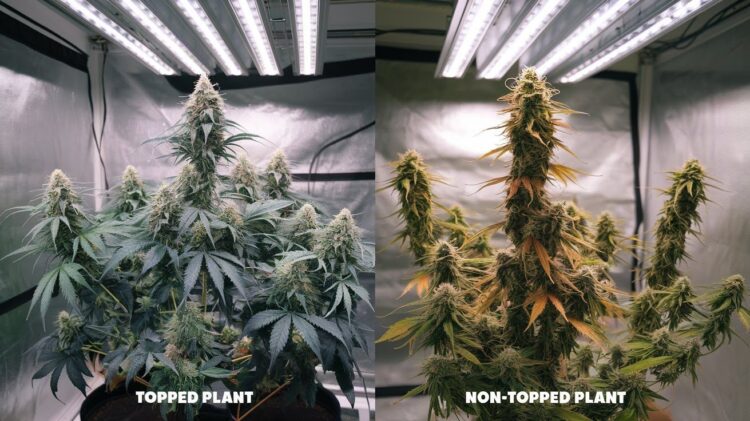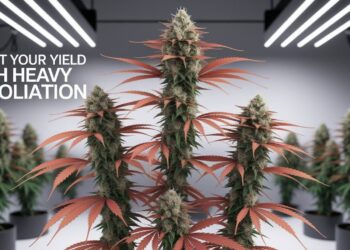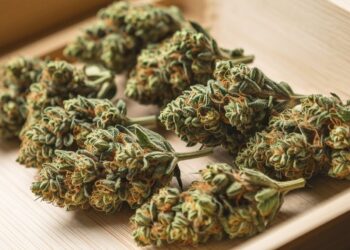When I first started growing cannabis over eight years ago, I made every mistake possible, including skipping plant training altogether. I’ve topped, not topped, tried low-stress techniques, and tested these methods indoors and outdoors. What did I learned? Training decisions directly impact your yield, plant shape, and bud quality.
This guide cuts through the guesswork. You’ll get step-by-step comparisons of topped vs. untopped plants, backed by actual grow results, not just theory. I’ll explain how topping redirects energy, how untrained plants behave, and what happens to yield in both cases.
My advice is rooted in firsthand experience and informed by well-documented horticultural practices. I’ve also contributed to grower communities and shared results that others have replicated successfully.
You deserve advice you can trust. That means full transparency, no marketing fluff, and clear answers so you can make the right call for your next growth.
Understanding Plant Topping vs Natural Growth
Let me break down these two growing methods in simple terms.
What is Topping?
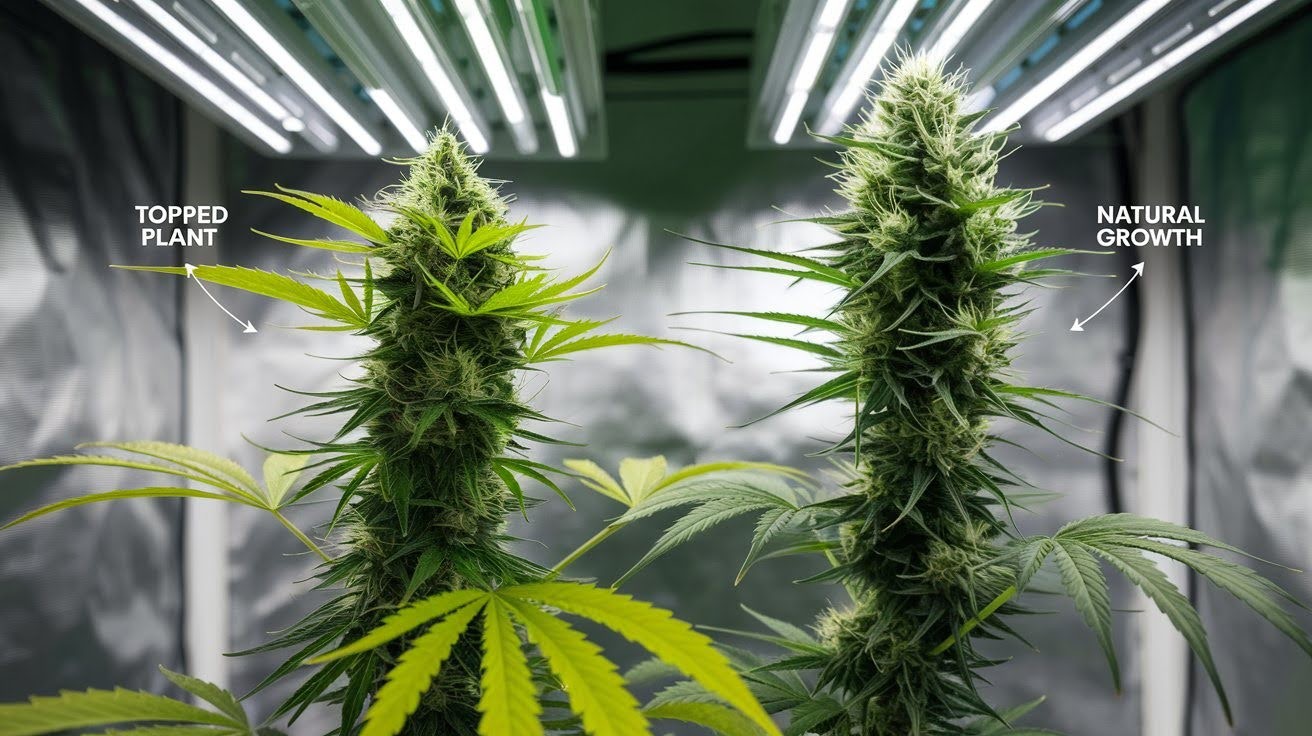
Topping means making a strategic cut at your plant’s highest point. This changes how your plant grows completely. Here’s the process: You cut the top part just above the leaf nodes.
Most growers do this when plants have 4-6 nodes developed. But here’s the catch – your plants need time to heal. Expect 7-14 days of recovery before you see new growth starting. During this time, multiple stems will begin forming where you cut.
The Science of Apical Dominance
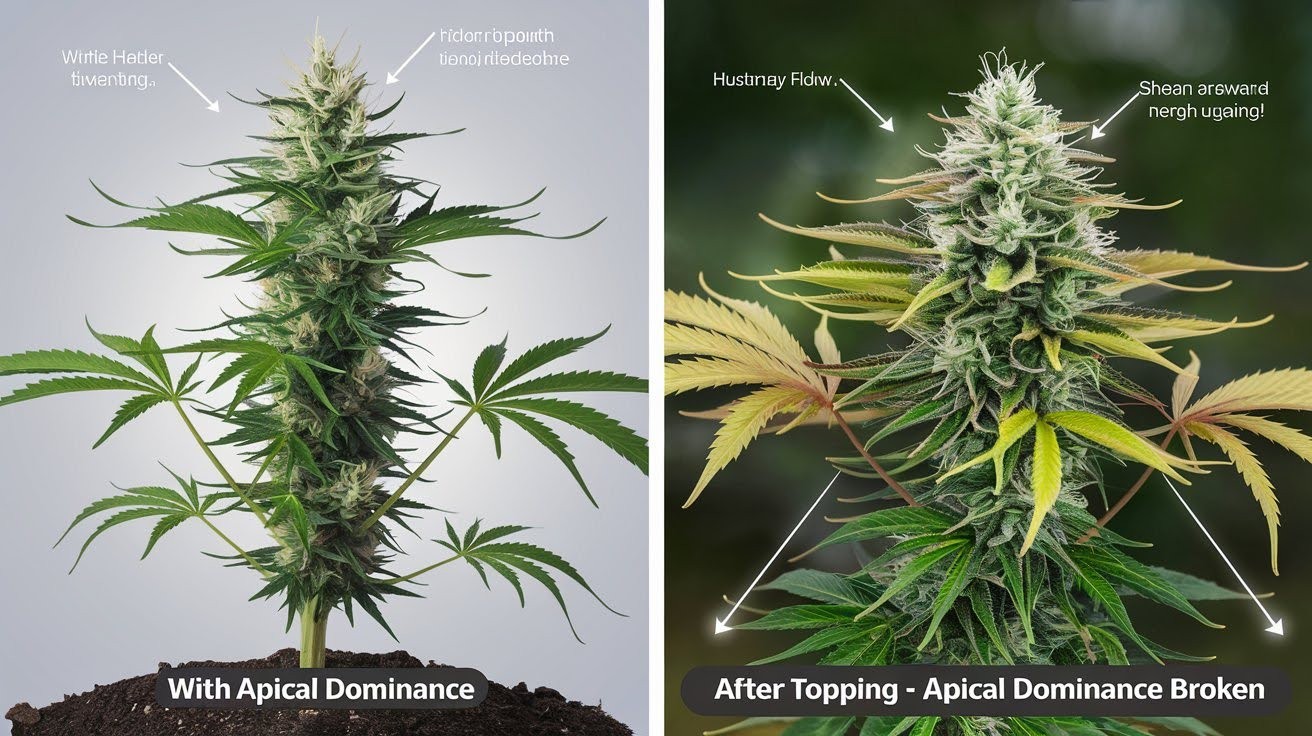
Plants naturally want to grow tall. This is called apical dominance. Think of it like this: your plant sends most of its energy straight up to the main tip. When you remove that tip, something interesting happens.
The plant gets confused and starts sending energy sideways instead. Hormones redistribute throughout the plant. Instead of one tall Christmas tree shape, you get a bushy structure with multiple main stems.
Non-Topped Plant Characteristics
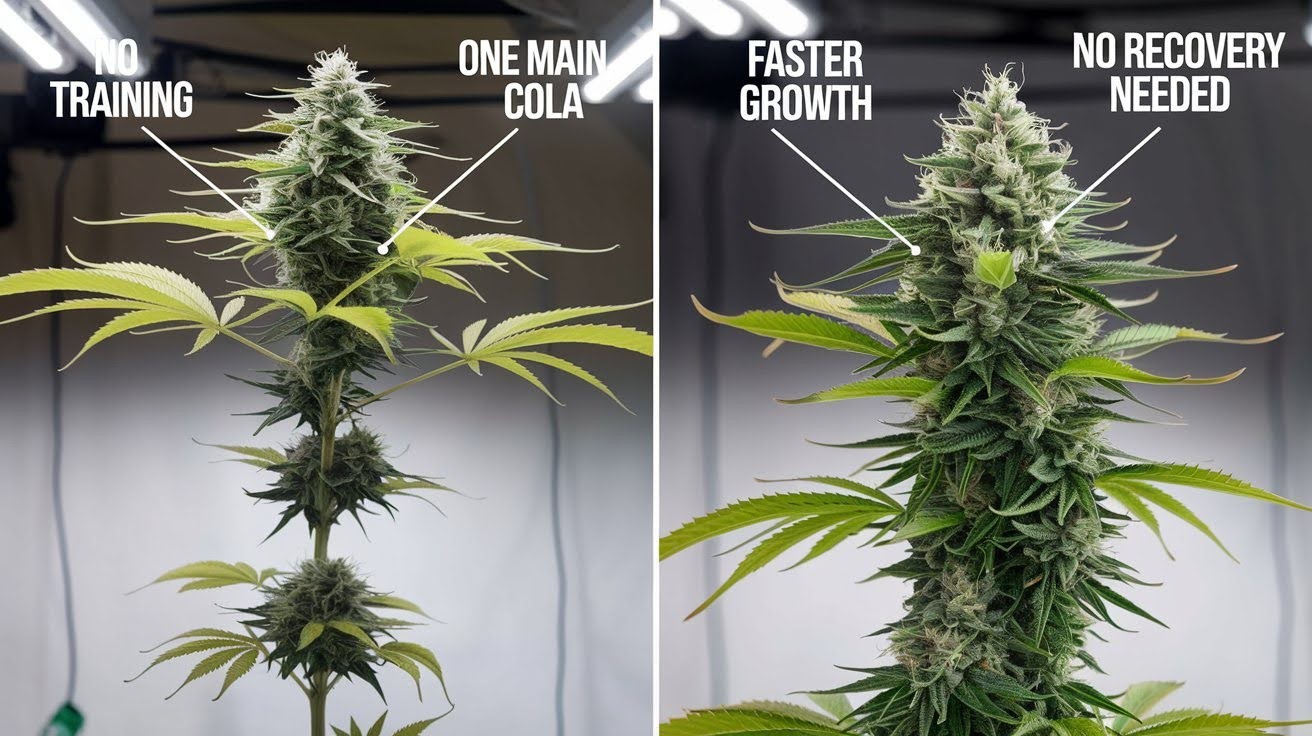
Untrained plants keep their single main leader intact. This creates that classic Christmas tree look we all recognize. All the plant’s energy focuses on one strong central stem.
This produces one massive, dense cola at the top. The big advantage? Faster growth. No stress periods. No recovery time needed.
Yield Comparison: The Core Question
Here’s what most growers get wrong about yield.
Yield Potential Analysis
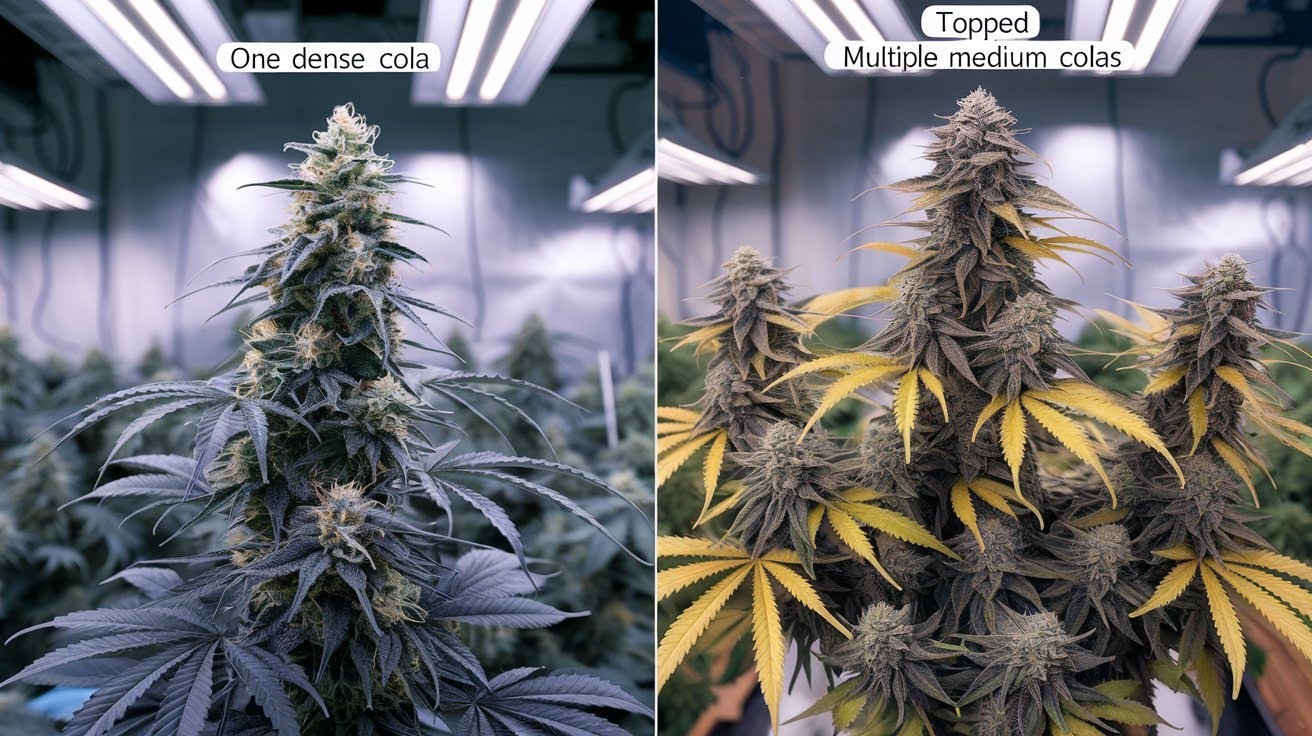
Reality check time: Topping doesn’t magically create more buds out of thin air. You’re trading one massive cola for several smaller ones. The math isn’t always better.
Think about it this way, bud distribution changes completely. Instead of one dense top, you get multiple medium-sized colas spread across the plant.
Quality matters too. Topped plants often produce buds with different density levels. Some areas get better light than others.
Factors That Determine Yield Outcomes
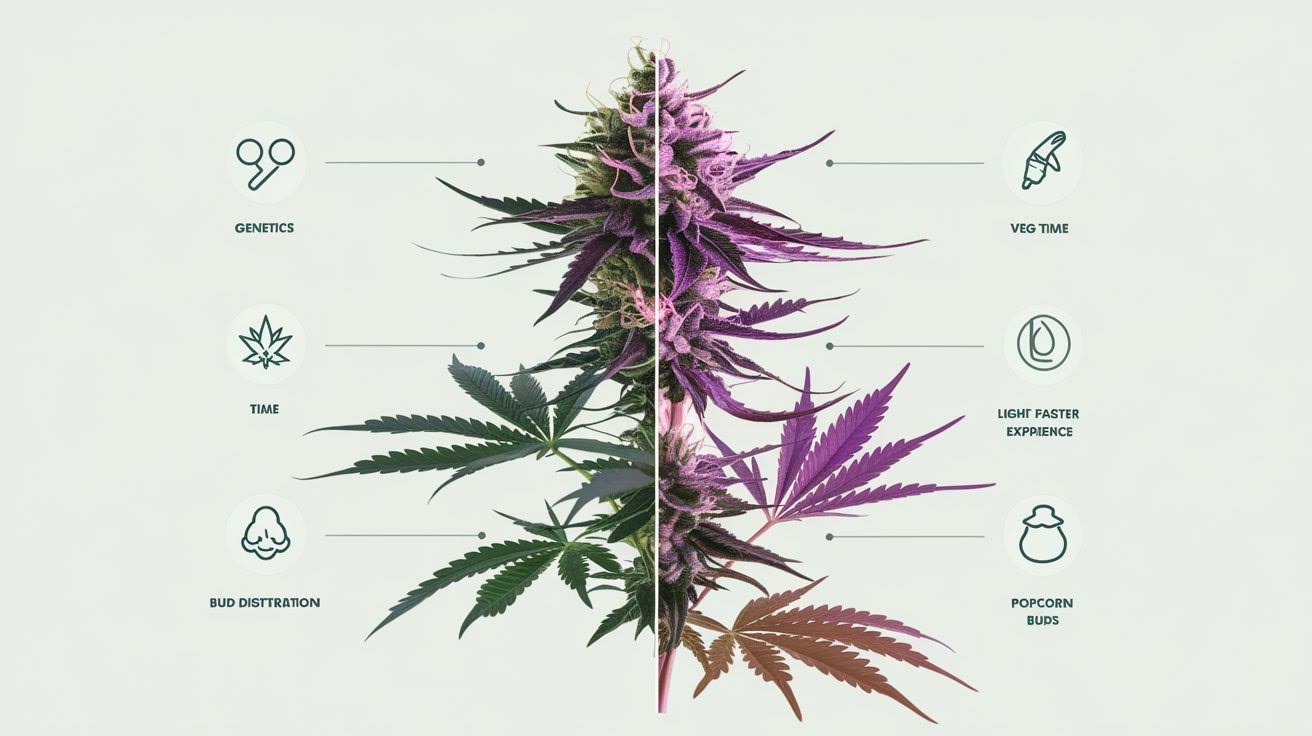
Your results depend on way more than just cutting or not cutting. Genetics plays a huge role. So do your growing conditions, care quality, and experience level. These factors matter more than topping alone.
Here’s something important: topped plants need longer vegetative time to recover. That means more weeks before flowering starts. Individual bud sizes change dramatically.
Multiple smaller colas versus one giant cola, which weighs more? It depends on your specific situation. You’ll also notice differences in “popcorn” buds. Topped plants sometimes produce more small, lower-quality buds.
Real-World Yield Data and Expectations
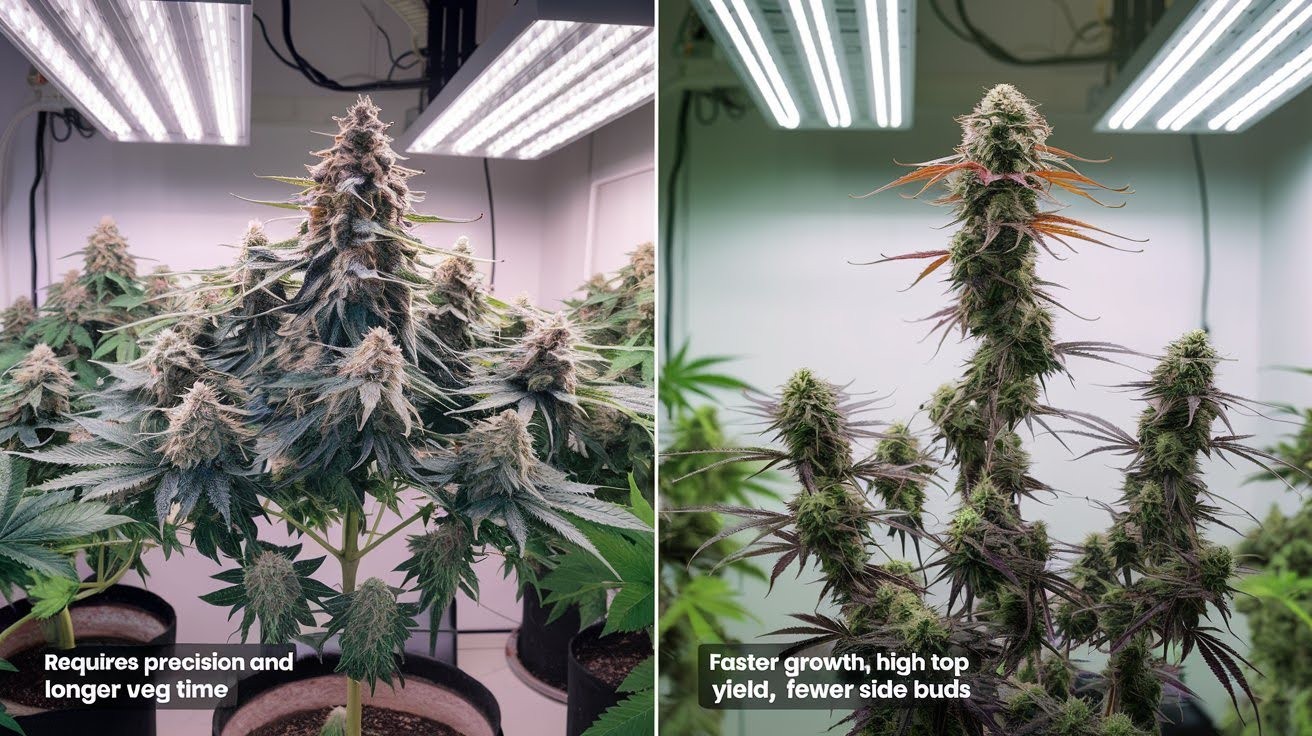
Topped plants win when everything goes perfectly: good genetics, optimal conditions, proper timing. But here’s the twist: non-topped plants often yield more when growers mess up the topping process or timing.
Stress-sensitive strains hate being cut. Some plants never fully recover. Quality distribution differs, too. Topped plants spread development evenly. Non-topped plants concentrate everything in one spectacular cola.
The winner? It depends on your growing skills and plant genetics.
Growth Pattern Differences That Impact Yield
The way your plant grows changes everything about your final harvest.
Topped Plant Yield Characteristics
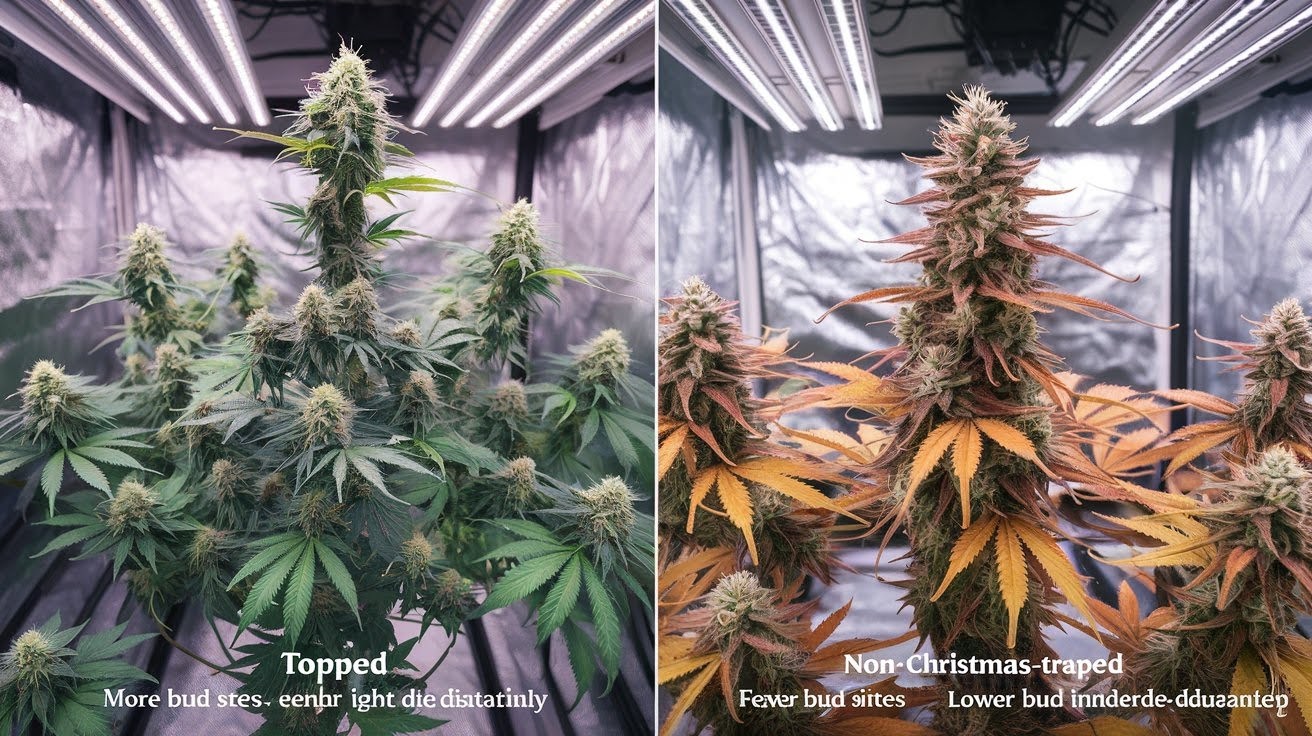
Structure changes completely when you top. Your plant becomes shorter and bushier. You get an even canopy with multiple main colas instead of one. Light hits more areas of the plant. Better penetration means lower branches produce quality buds. More bud sites become productive.
Here’s what you’ll see: Several medium-sized colas instead of one giant one. Each cola develops well because they’re all at similar heights. Space matters too. Topped plants use your growing area more efficiently. Better yield per square foot if you’re working with limited space.
Non-Topped Plant Yield Characteristics
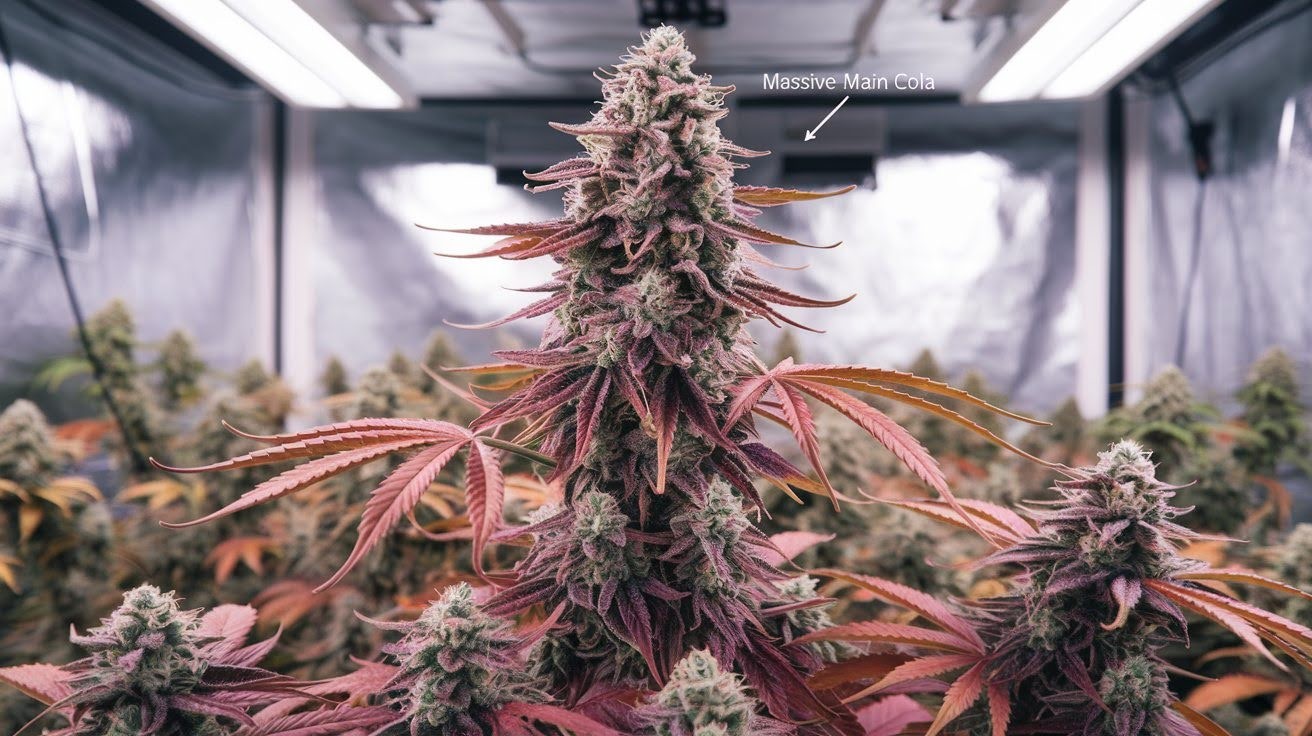
Untrained plants grow tall with that classic Christmas tree look. One dominant cola rules everything. All the plant’s energy flows into that main top. This creates concentrated development in one area.
The bud pattern is predictable: One massive top cola with progressively smaller buds down the stem. The lower branches barely produce anything worthwhile. But here’s the impressive part: that single main cola can reach incredible weights. I’ve seen individual colas weighing several ounces from healthy, untrained plants.
The trade-off is clear: concentrated power versus distributed production. Your choice depends on what you value more.
Pros and Cons for Yield Optimization
Let me show you when each method wins.
When Topped Plants Yield More
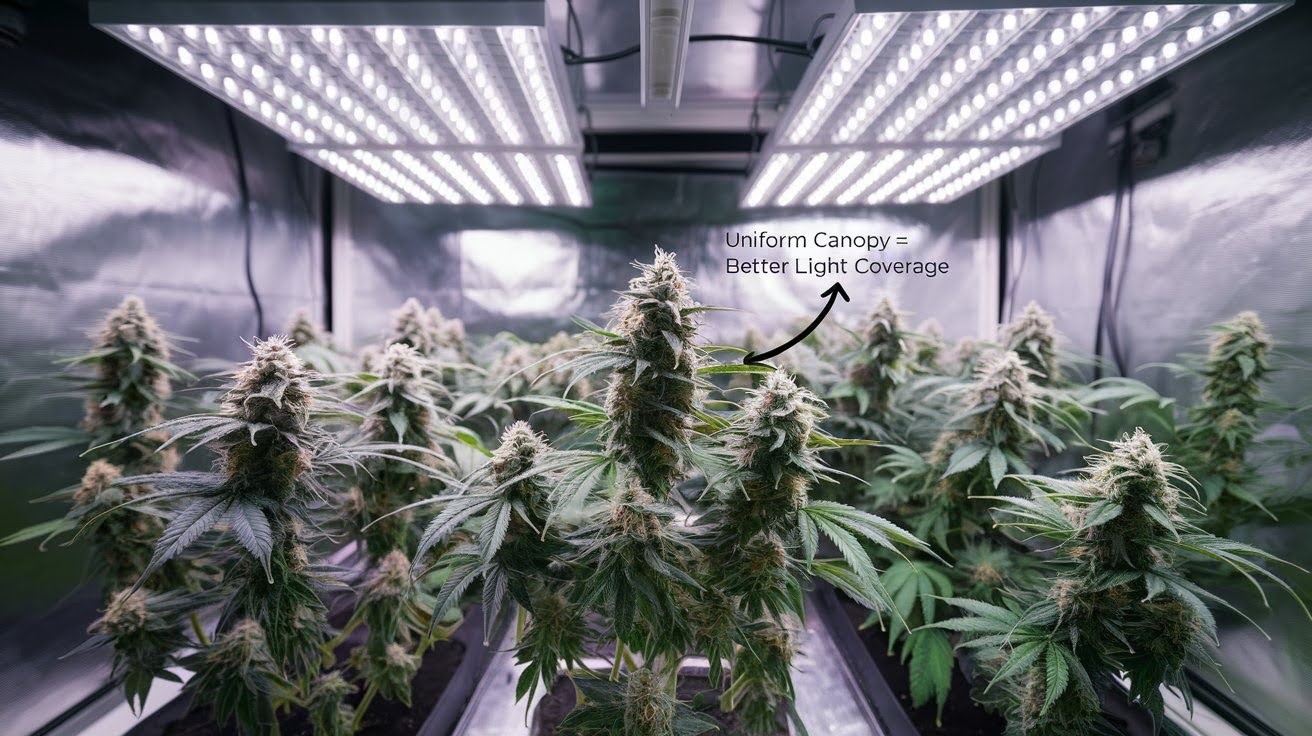
More bud sites mean more places for flowers to grow. Simple math, more locations can equal more total weight. Light hits every cola evenly. No shadowing issues like you get with tall, untrained plants. Each flowering site gets quality light exposure.
Working in a tent or a low-ceilinged room? Topped plants maximize your vertical space, yield better per square foot when height limits your options. Here’s the key advantage: uniform canopy development. All your colas finish at the same time with similar quality.
When Non-Topped Plants Yield More
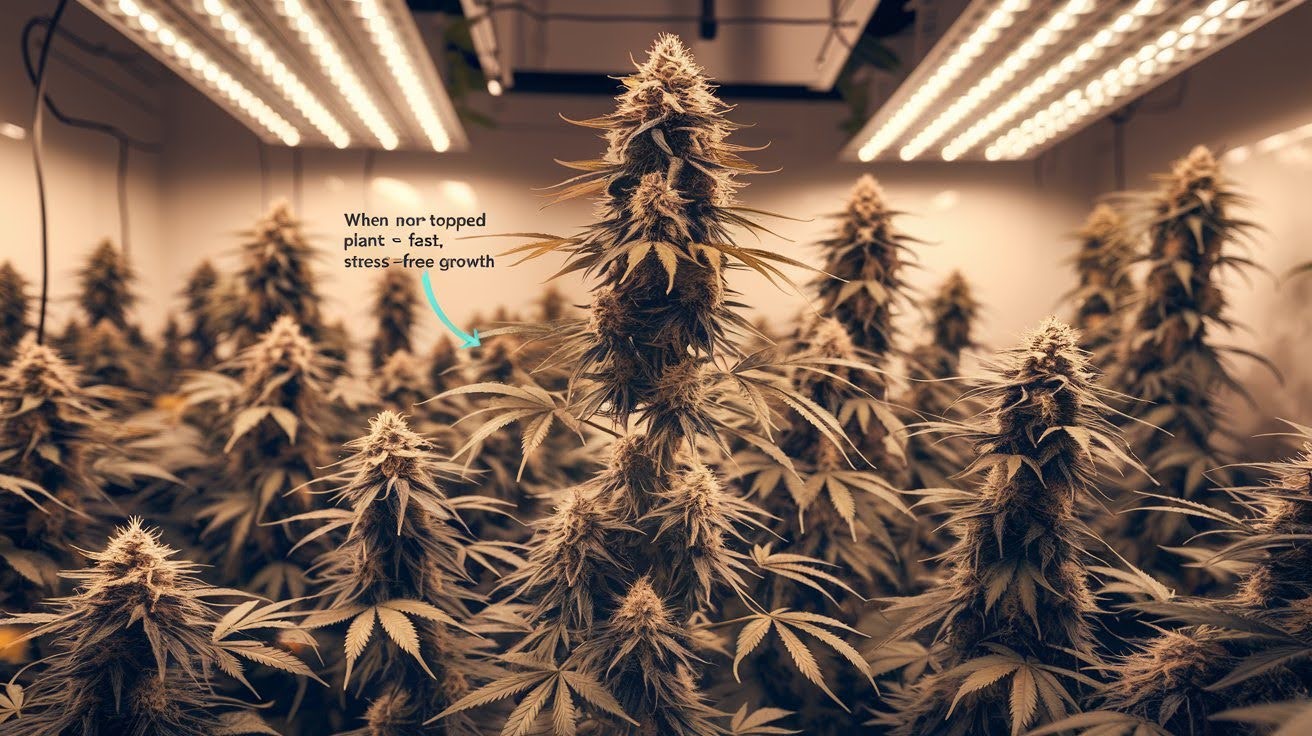
No cutting means no recovery period. Your plant keeps growing without that 7-14 day pause for healing. Growth stages happen faster. Vegetative time shortens, and you reach flowering sooner.
That single massive cola can surprise you. I’ve seen individual tops outweigh multiple smaller colas combined, pure concentrated power. Less can go wrong with untrained plants: no timing mistakes, no cutting errors, no stress-related problems.
The complexity factor matters more than most growers realize. Fewer variables mean fewer chances to mess up your yield. Both methods work. The winner depends on your growing conditions, experience level, and what your specific strain responds to best.
Disadvantages That Reduce Yield
Both methods have serious downsides that can hurt your harvest. Topped plants face real problems. That stress period isn’t just inconvenient it slows total growth. Your plant stops developing for up to two weeks.
Timing mistakes kill yields. Cut too early or too late, and your plant never recovers properly. I’ve seen growers lose entire harvests from bad topping technique. You’ll also need longer vegetative periods. More time doesn’t always mean more buds.
Non-topped plants waste potential. Light can’t reach the lower branches effectively. Those bottom areas produce tiny, worthless buds. Height becomes a nightmare in small spaces. Your plant might outgrow your setup before flowering starts.
The bottom line? Wasted light equals wasted yield. Those shadowed areas could be producing quality buds instead.
Specific Growing Scenarios and Yield Impact
Your growing environment changes, which method wins completely?
Indoor Growing Yield Considerations
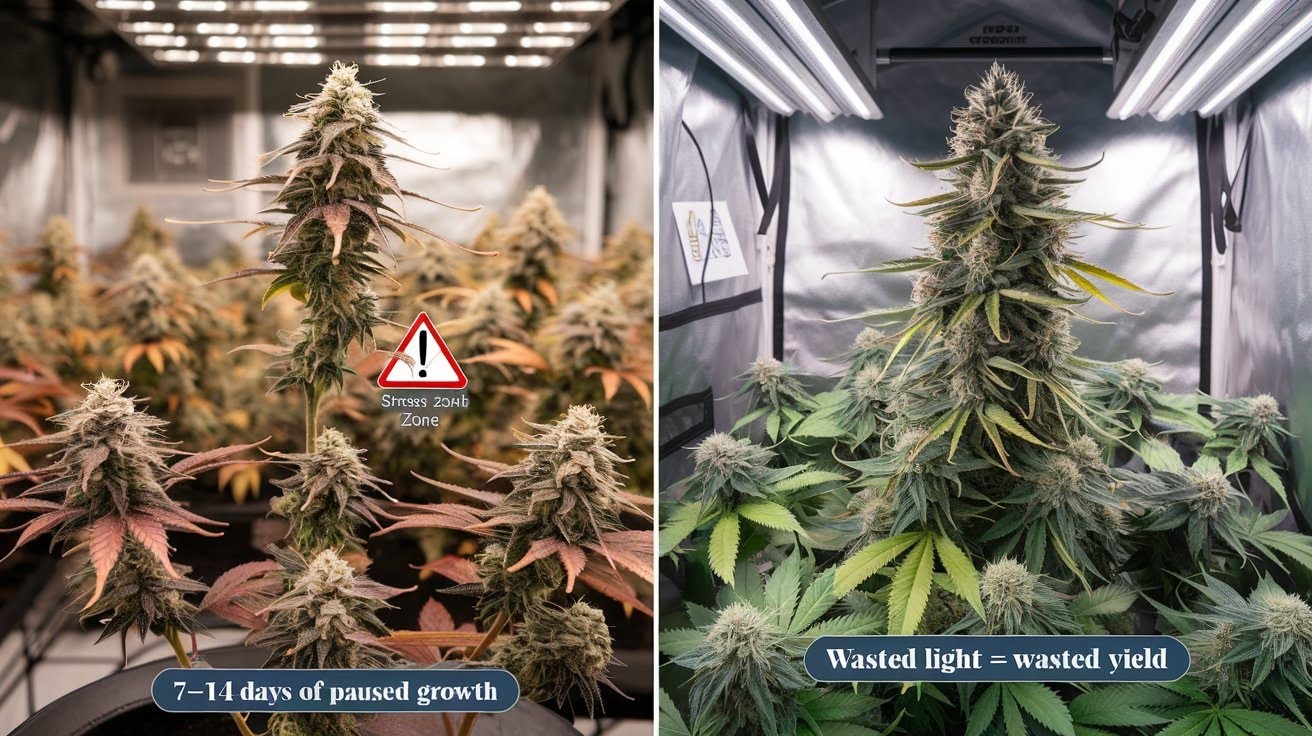
Topped plants love indoor setups. Artificial lights work better with even canopies. You control temperature and humidity during recovery periods. Non-topped plants hit your ceiling fast. Height becomes your enemy in tents and small rooms.
Uneven canopies waste expensive grow light coverage. Space constraints matter most indoors. Limited square footage means topped plants often yield more per area used.
Outdoor Growing Yield Factors
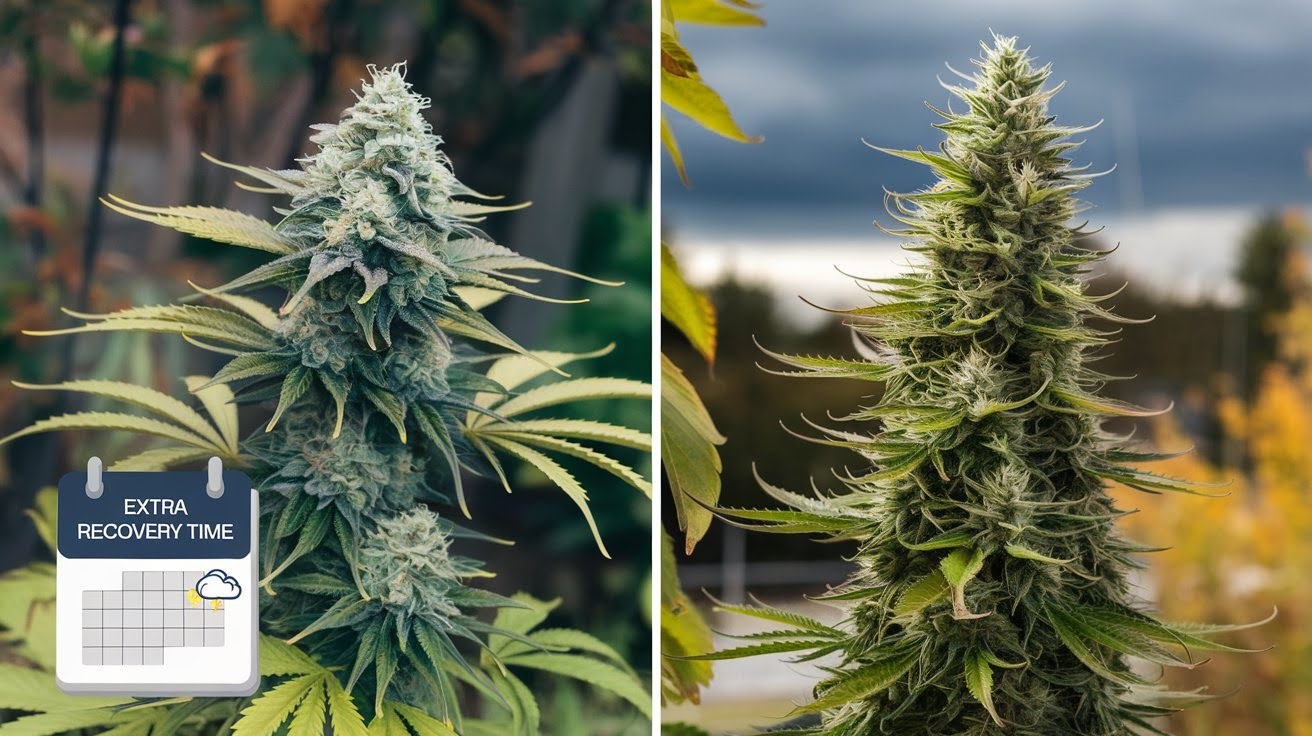
Timing becomes critical outside. You must stop early before the weather turns unpredictable. Late cuts risk exposure to storms or cold snaps. Here’s the advantage of natural plants: they suit outdoor conditions perfectly, with less stress, fewer complications.
Non-topped plants handle weather changes better. Natural growth patterns work with nature instead of against it. Season length affects everything. Longer growing seasons give topped plants time to recover and produce.
Autoflower Yield Reality Check
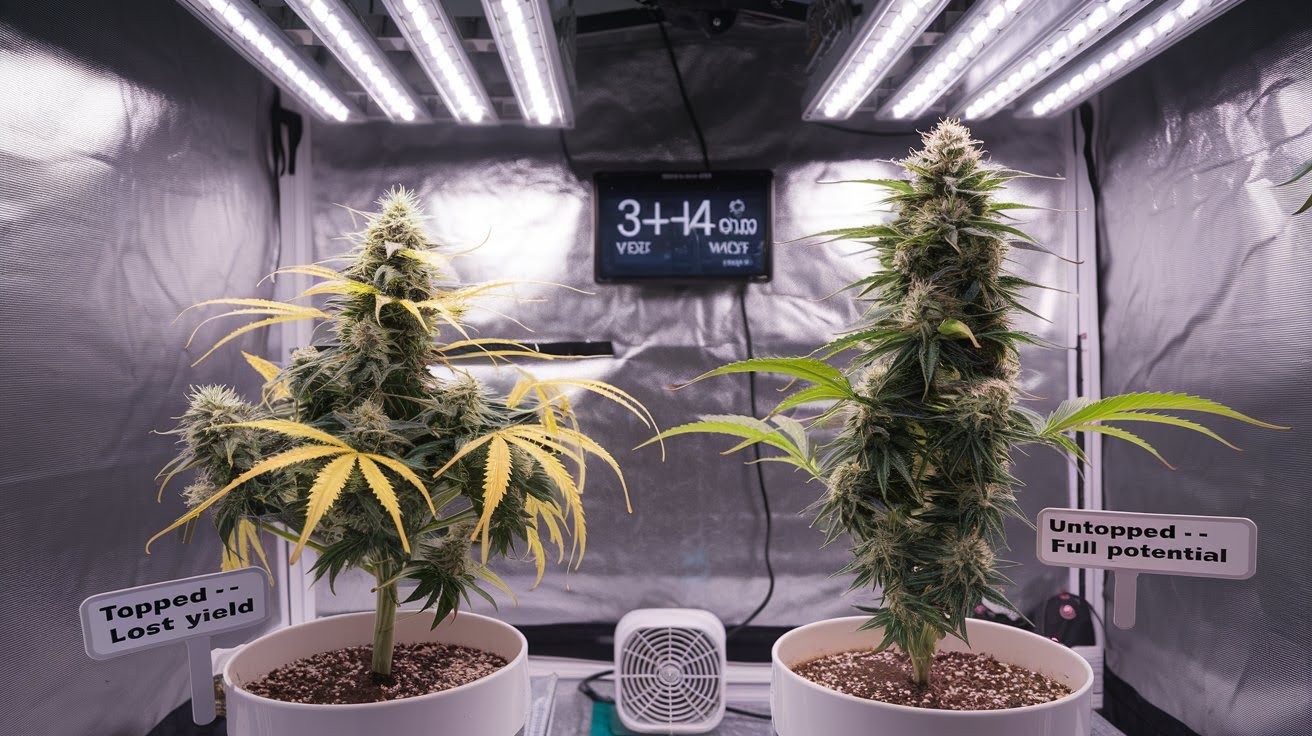
Stop right there if you’re growing autoflowers. Topping usually kills your yield with these plants.
Autoflowers only vegetate for 3-4 weeks. That recovery period eats precious growing time you can’t get back.
Expert consensus is clear: don’t top autoflowers if you want maximum yield. The stress hits during their most critical development phase. Your plant can’t compensate with extra vegetative time like regular plants can.
Making the Right Choice for Maximum Yield
Your specific situation determines which method wins.
Decision Factors Based on Your Situation
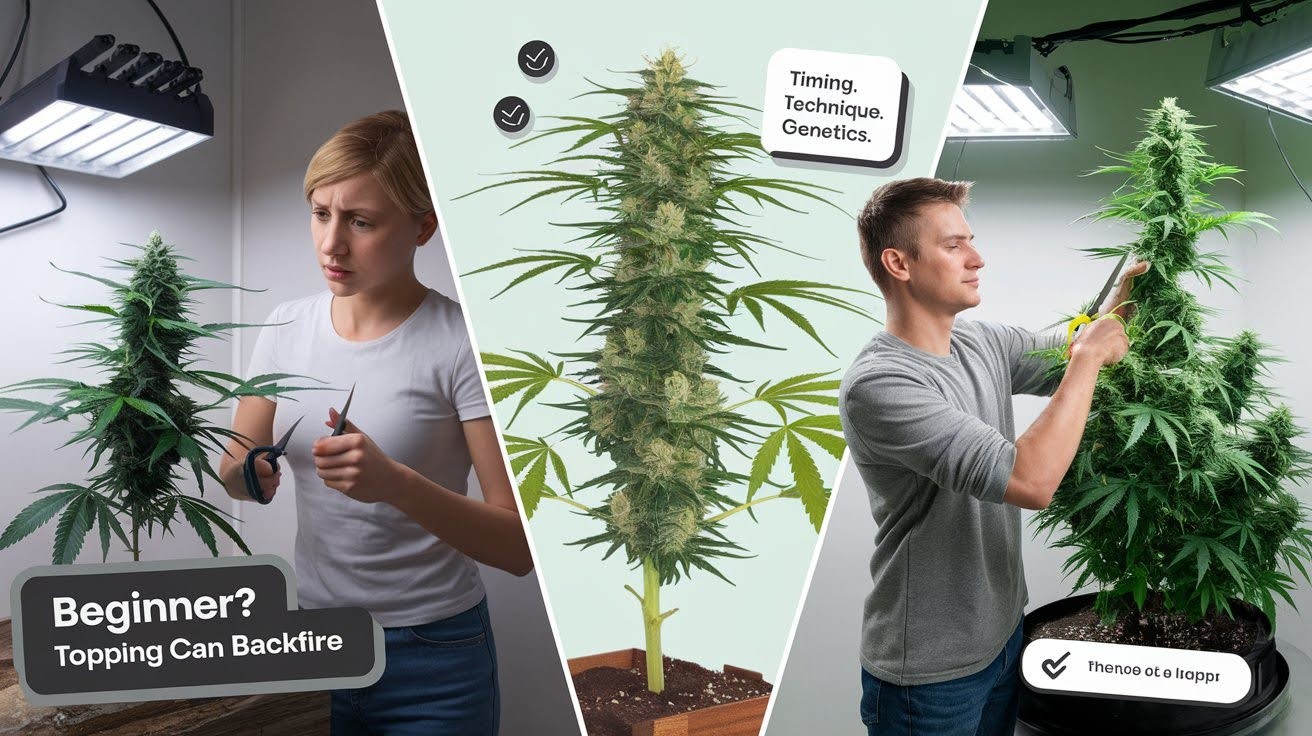
Experience level matters most. Topping requires proper timing and technique. New growers often mess up the cuts or timing. Your growing space creates real limitations. Height, time, and environment all affect which method works better.
Some strains love being topped. Others hate the stress and never recover properly. Know your genetics before making cuts. Quality versus quantity, what do you value more? This choice affects your training decision.
When to Choose Topping for Yield

Indoor grows benefit most from topping. Height restrictions make even canopies essential.
Experienced growers with good timing see better results.
You need skill to execute properly. Research your strain first. Some genetics respond amazingly to stress training. Sufficient vegetative time is non-negotiable. Rushed grows fail with topping.
When to Choose Non-Topped for Yield
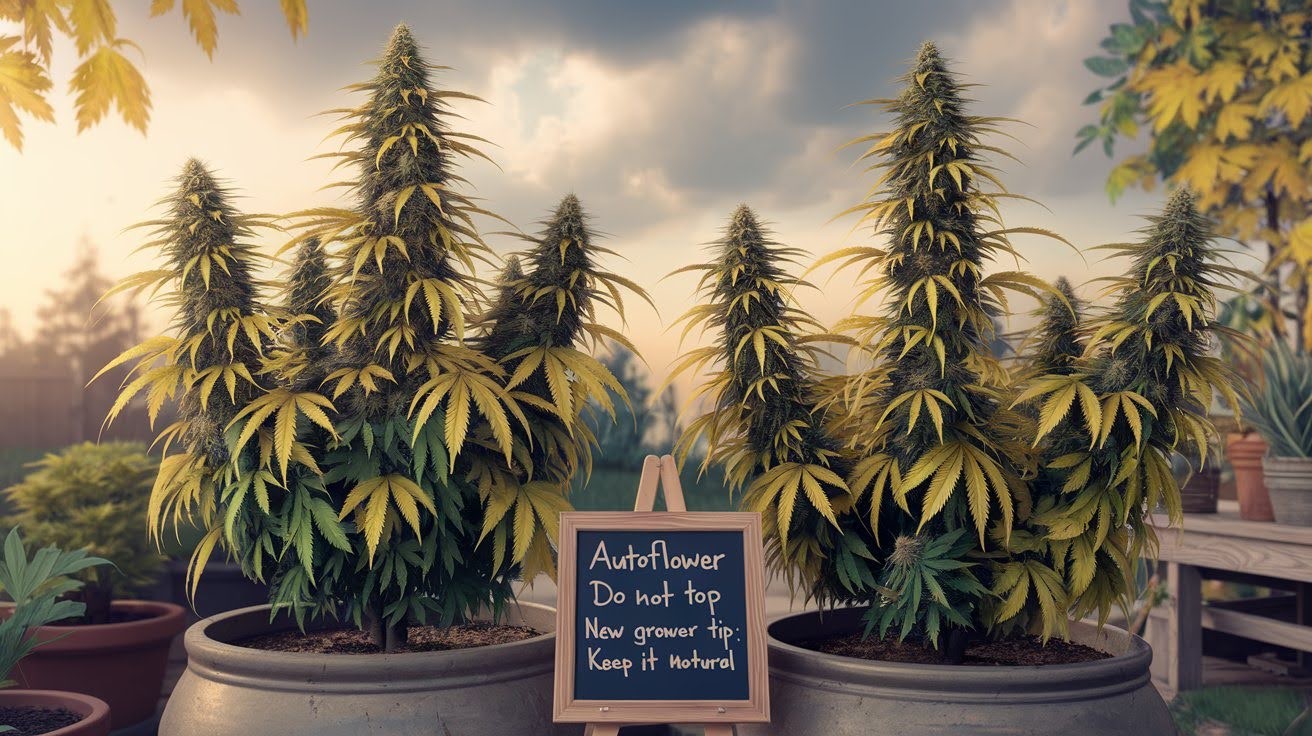
Never top autoflowers. Their short vegetative period can’t handle the stress. New growers should skip topping initially. Less complexity means fewer mistakes.
Outdoor timing constraints favor natural growth. The weather doesn’t wait for recovery.
Stress-sensitive strains perform better untrained.
Conclusion
The topped plant vs non-topped debate doesn’t have a universal winner. Your growing environment, experience level, and plant genetics determine which method yields more buds.
Topped plants excel indoors with controlled conditions and limited height. Non-topped plants shine outdoors and with autoflowers, where recovery time matters most.
You now have the facts to make an informed choice for your specific situation. No more guessing or following conflicting advice online. Start with your growing constraints, space, time, and experience level. Then pick the method that fits your setup best.
What’s your experience with these training methods? Drop a comment below and share your results. Your insights could help fellow growers optimize their harvests, too.
Happy growing, and may your next harvest exceed expectations!
Frequently Asked Questions
Does topping increase yield compared to non-topped plants?
Not automatically. Topping can increase yield in optimal conditions with proper technique, but non-topped plants often yield more when growers lack experience or when growing space is unlimited.
How long does a topped plant take to recover?
Topped plants need 7-14 days to recover from the stress and start producing new growth. This recovery period extends the overall growing timeline compared to non-topped plants.
Should I top autoflower plants for better yields?
No. Most experts recommend against topping autoflowers because their short 3-4 week vegetative period doesn’t allow enough recovery time, typically reducing final yields instead of increasing them.
Which method works better for indoor growing?
Topped plants generally perform better indoors due to height restrictions and artificial lighting. The even canopy maximizes light utilization and prevents plants from outgrowing limited vertical space.
When do non-topped plants yield more than topped ones?
Non-topped plants often yield more when grown outdoors with unlimited height, when growers make topping mistakes, or with stress-sensitive genetics that don’t recover well from cutting.

